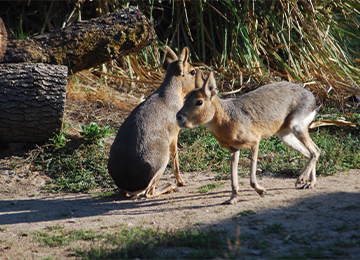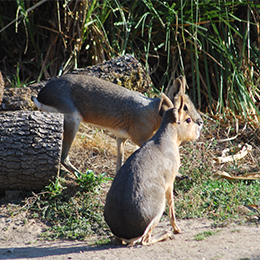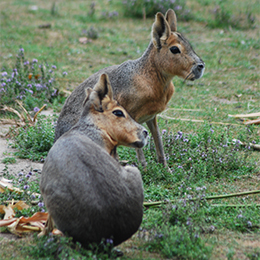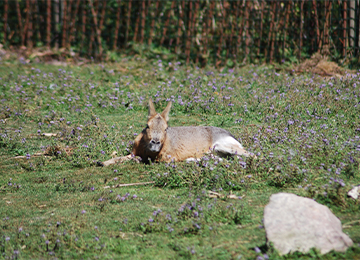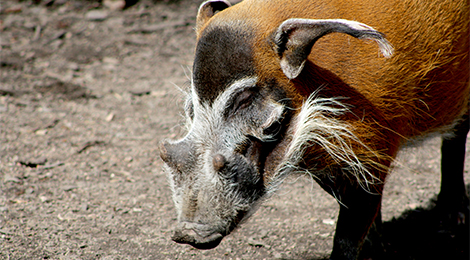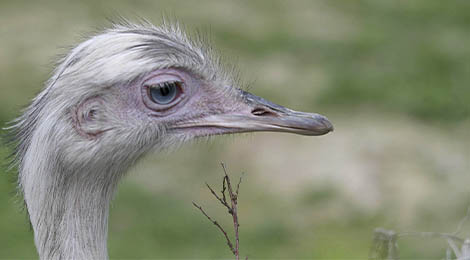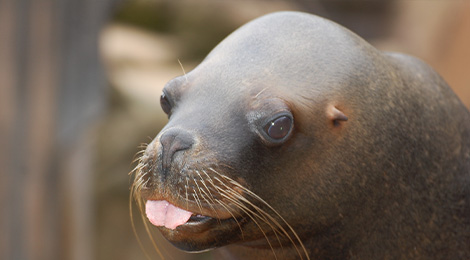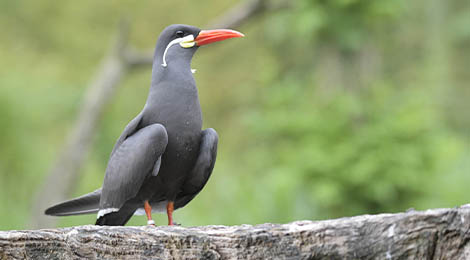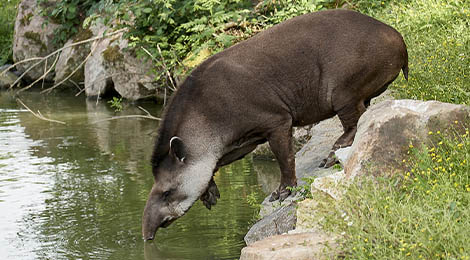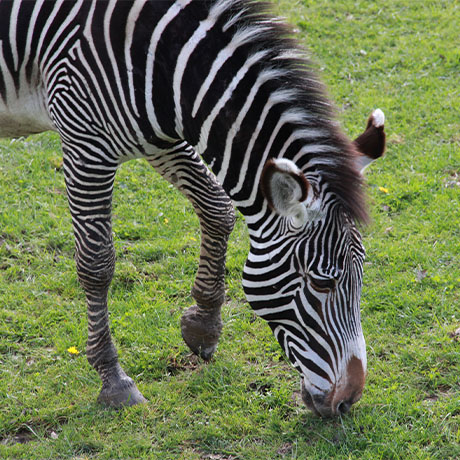A small diurnal rodent
Maras usually live in mating pairs in small groups of 8 to 10 individuals, made up of adults and the offspring born during the year. These small groups sometimes come together to form colonies of around 30 individuals. Maras are small diurnal rodents. They like to build their dens in wide open spaces surrounded by grasses and other low-lying plants. The development of farming, sheep breeding in particular, has contributed to the destruction of their habitat, and the European hare introduced by humans has brought disease. Maras are also hunted for their fur. All of this has led to a decline in the population of this species.
Maras are found in Argentina.
The female produces a litter once a year. The male does not help rear its offspring but defends the family against predators.
-
HabitatDesert and savannah
-
Food
Leaves, seeds, fruit and flowers

The mara is a naturally nervous animal. It is constantly on the lookout and regularly monitors the surrounding area by standing up on its hind legs. It raises the alarm in case of danger. To detect predators (pumas or foxes), it relies on its highly developed senses: hearing, sight and smell. It can also run at a maximum speed of 45 km/h.
A zoological reserve populated by Asian elephants, giraffes, lions, tigers, hippos, chimpanzees, gibbons, wolves, ostriches ... Animals evolving in their reconstituted natural environment, to discover as a family.
All animals
-
![]() Blue and yellow macaw Discover animal
Blue and yellow macaw Discover animal -
![]() Potamochoerus Discover animal
Potamochoerus Discover animal -
![Gros plan sur la tête de Nandou au zoo Le PAL]() Rhea Discover animal
Rhea Discover animal -
![Une otarie de profil au zoo Le PAL]() South American sea lion Discover animal
South American sea lion Discover animal -
![]() Inca tern Discover animal
Inca tern Discover animal -
![]() Tapir Discover animal
Tapir Discover animal -
![Gros plan sur la tête d'un phoque veau marin au parc animalier Le PAL]() Harbour seal Discover animal
Harbour seal Discover animal -
![Wallaby de Bennett au par Le PAL dans l'Allier]() Bennett's wallaby Discover animal
Bennett's wallaby Discover animal -
![Panthère des neiges la gueule ouverte au zoo Le PAL en Auvergne]() Snow Leopard Discover animal
Snow Leopard Discover animal -
![Gros plan sur un zébre de Grévy qui broute de l'herbe]() Zebra of Grevy Discover animal
Zebra of Grevy Discover animal



